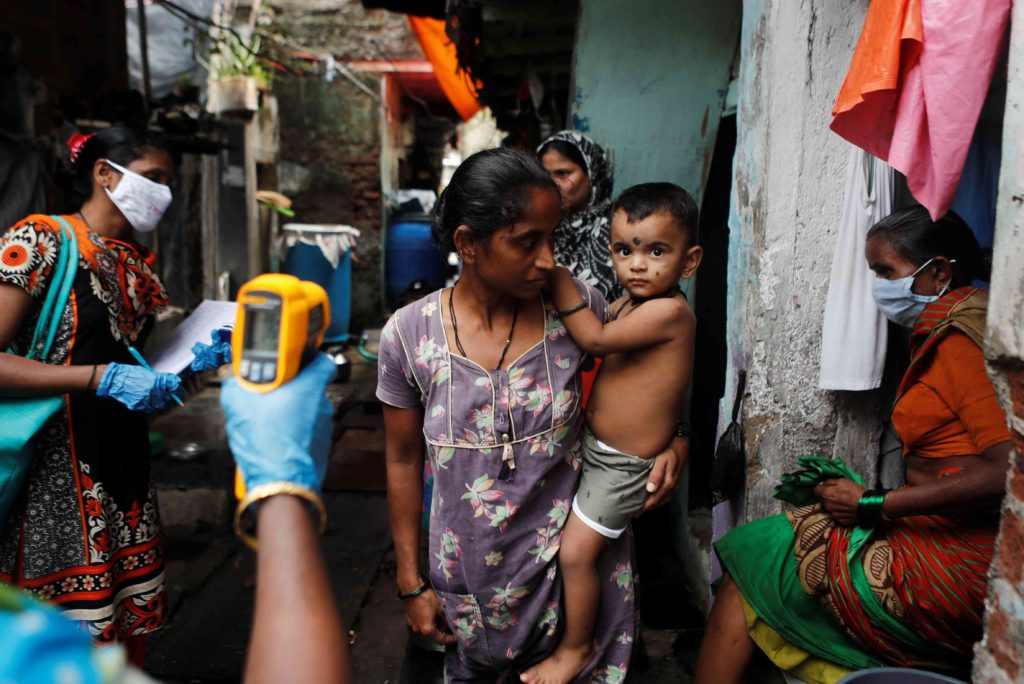The Poor community of Mumbai were badly affected with the inaccessibility of private and public healthcare. One of the example is the area of Gowandi situated in the eastern suburbs of Mumbai. It has the city’s lowest human development index citywide, where 78% of people living in slums, according to a 2009 municipal corporation’s 2009 report.
Image credit: Scroll.in – A healthcare worker checks temperature in the slum area.
With most families living off daily wage work, the lockdown in Govandi caused severe financial hardship. Many could not afford private healthcare, with dangerous consequences.
Govandi is a tuberculosis hotspot, with 2,000 recorded cases of the extensively drug-resistant TB strain, according to government data. In some localities, the disease affects one in every 10 people.
“Since the lockdown, most have lost their incomes, so they can barely afford private hospitals,”
SAID 52-YEAR-OLD MOHAMMED UMAR SHAIKH, A GOVANDI ACTIVIST.
Maternal care too was severely disrupted, said Apnalaya, a Mumbai nonprofit that works on health issues. A survey by Apnalaya conducted between March 20 and June 25, found that 6% of 534 women who gave birth over this period delivered at home – many no larger than 10 feet by 12 feet.
Local municipal hospitals where women had been scheduled to deliver had been turned into Covid-only health centres, and some maternal clinics remained shut through the lockdown.
“With antenatal care clinics disrupted, iron and folic acid tablets for expectant mothers were either not available or families were forced to buy it,” said Poornima Nair, director, health and disability, at Apnalaya.
Mumbai’s unabated rise in Covid-19 infections meant that hospitals are so overwhelmed with treating patients with the virus that surgeries, in some hospitals have gone down by as much as 90%, said Satish Dharap PhD, secretary, Association of Surgeons in India and head of surgery at Mumbai’s municipal B Y L Nair Hospital.
This article is excerpt from this article from Scroll.in
